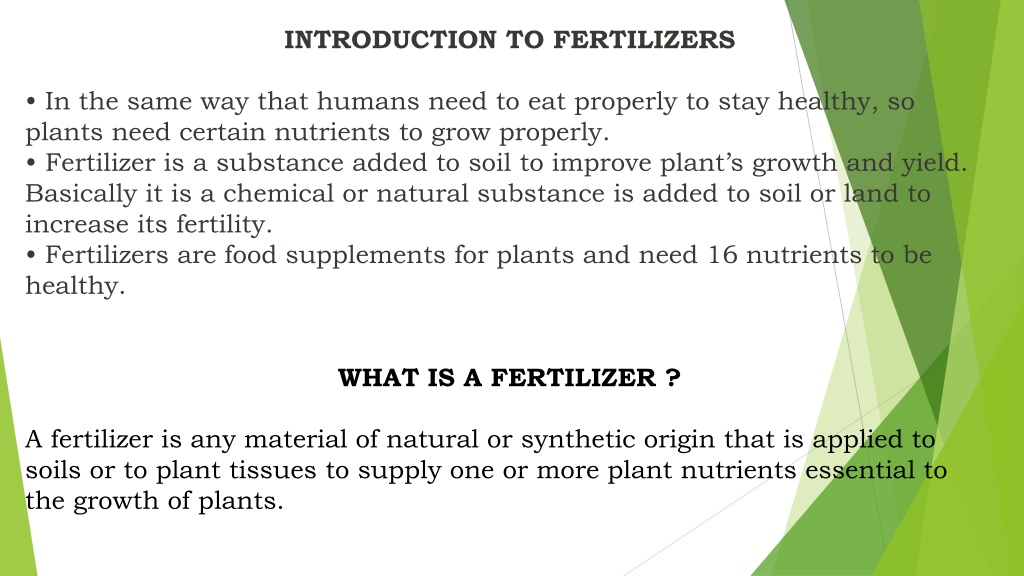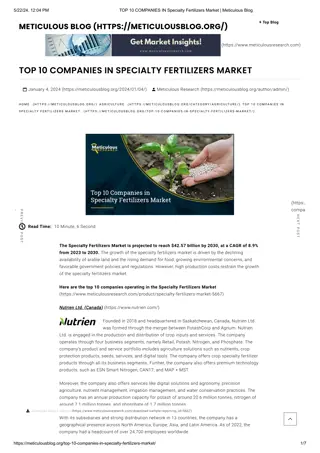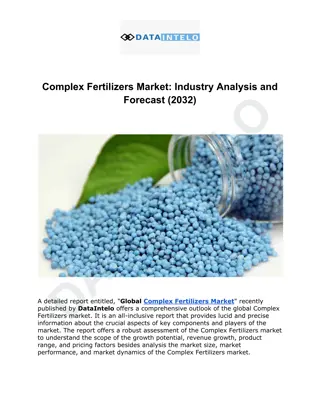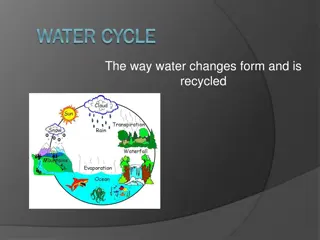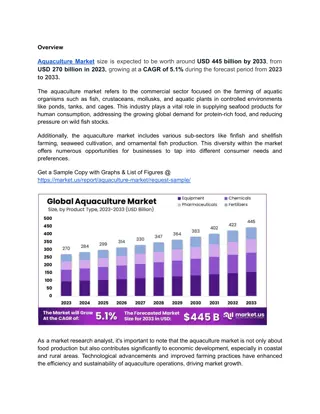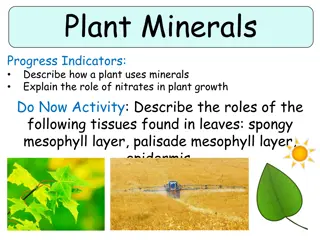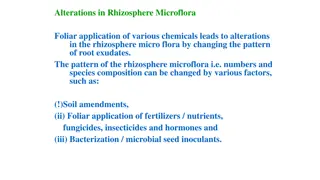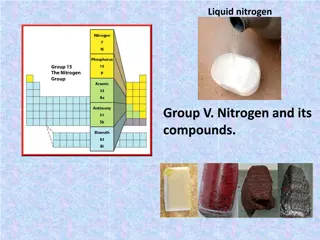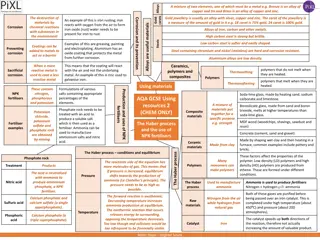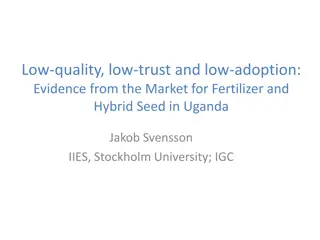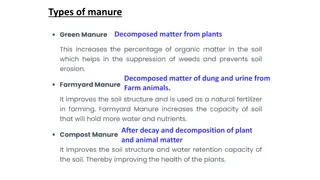Understanding Fertilizers and Their Types
Fertilizers are essential for plant growth, providing nutrients necessary for healthy development. They are classified into organic and inorganic types, each with its own advantages and disadvantages. Organic fertilizers, sourced from natural materials like plants and animals, enrich the soil with organic matter, while inorganic fertilizers are chemically produced for specific nutrient needs. Understanding the different types of fertilizers can help in improving crop yield effectively.
Download Presentation

Please find below an Image/Link to download the presentation.
The content on the website is provided AS IS for your information and personal use only. It may not be sold, licensed, or shared on other websites without obtaining consent from the author. Download presentation by click this link. If you encounter any issues during the download, it is possible that the publisher has removed the file from their server.
E N D
Presentation Transcript
INTRODUCTION TO FERTILIZERS In the same way that humans need to eat properly to stay healthy, so plants need certain nutrients to grow properly. Fertilizer is a substance added to soil to improve plant s growth and yield. Basically it is a chemical or natural substance is added to soil or land to increase its fertility. Fertilizers are food supplements for plants and need 16 nutrients to be healthy. WHAT IS A FERTILIZER ? A fertilizer is any material of natural or synthetic origin that is applied to soils or to plant tissues to supply one or more plant nutrients essential to the growth of plants.
Types Of Fertilisers Fertilisers are mainly classified into two main types,organic and inorganic fertilizers. Organic Fertilizers Natural fertilizers derived from plants and animals are known as organic fertilizers. By adding carbonic molecules necessary for plant growth, it enriches the soil. Organic fertilizers boost the amount of organic matter in the soil, encourage microbial reproduction, and alter the physical and chemical composition of the soil. It is regarded as one of the essential elements for foods that are green. Organic fertilizers can be obtained from the following products: Agricultural Waste Livestock Manure Industrial Waste Municipal Sludge
Inorganic Fertilizers Chemical fertilizers generated by chemical techniques that contain nutrients for crop growth are known as inorganic fertilizers. The inorganic fertilizers are of the following types: Nitrogen Fertilizers Nitrogen fertilizers contain nitrogen necessary for the development of crops. Nitrogen, a key constituent of chlorophyll, helps main balance in the process of photosynthesis. It is also a part of amino acids in plants and contains protein. Nitrogen fertilizers improve the production and quality of agricultural products. Phosphorus Fertilizer In a phosphorus fertilizer, phosphorus is the principal nutrient. The effective phosphorus concentration, fertilization techniques, soil characteristics, and crop strains all affect how successful a fertilizer is. The protoplasm of the cell contains phosphorus, which is crucial for cell growth and proliferation. The growth of the plants roots is aided by the phosphorus fertilizer.
Advantages Of Fertilisers Disadvantages Of Fertilisers The advantages of fertilisers are mentioned below: Fertilisers have the following disadvantages: Easy to transport, store, and apply Expensive For supplying a specific nutrient we can select a specific fertiliser due to its nutrient specific nature The ingredients in the fertilizers are toxic to the skin and respiratory system Water-soluble and can easily dissolve in the soil. Hence, they are easily absorbed by the plants Excessive use of fertilisers damages the plants and reduces soil fertility They have a rapid effect on the crops Leaching occurs and the fertilisers reach the rivers causing eutrophication Increase the crop yield and provide enough food to feed the large population Long term use reduces the microbial activity and disturbs the pH of the soil Predictable and reliable
Uses Of Fertilisers Fertilisers are used for various purposes. The uses of fertilisers are mentioned below: Used to provide additional nutrients to the plants They are added to improve the yield of the crops Nitrogen-rich fertilisers are used for the greening of lawns Organic fertilisers improve the texture and fertility of the soil Gardeners use fertilisers to address certain needs of the plants such as nutritional needs Fertilisers are added to potted plants to replace the lost nutrients
Importance Of Fertilizers With such limited resources, it is quite challenging to meet the demands of the expanding population. Agriculture output has declined due to pests, a shortage of fertilizers, and declining soil fertility. The significance of fertilizers in agriculture has expanded as a result. Fertilizers can be essential to plants in the following ways: Fertilizers make plants more resistant to pests. As a result, they are using fewer insecticides and herbicides, which results in healthier crops. Hence, fewer illnesses are present, giving the crops an aesthetic value. Fertilizers improve the water holding capacity of the plants and increase root depth. The potassium content present in the fertilizers strengthens the straws and stalks of the plants. The phosphorus present in the fertilizers helps in faster development of roots and formation of seeds in plants. Nitrogen in the fertilizers promotes plant growth, which is seen in the green colour of the plants Since chemical fertilizers adversely affect soil fertility, bio fertilizers were brought into use. These are substances that contain living or latent cells, and even micro-organisms. They provide the soil with the necessary nutrients and microbes for the growth of the plants. They help the soil to retain its fertility. They are environment-friendly and also destroy pathogenic components responsible for causing disease in plants.Acetobacter and Rhizobium are two such widely used biofertilisers.
